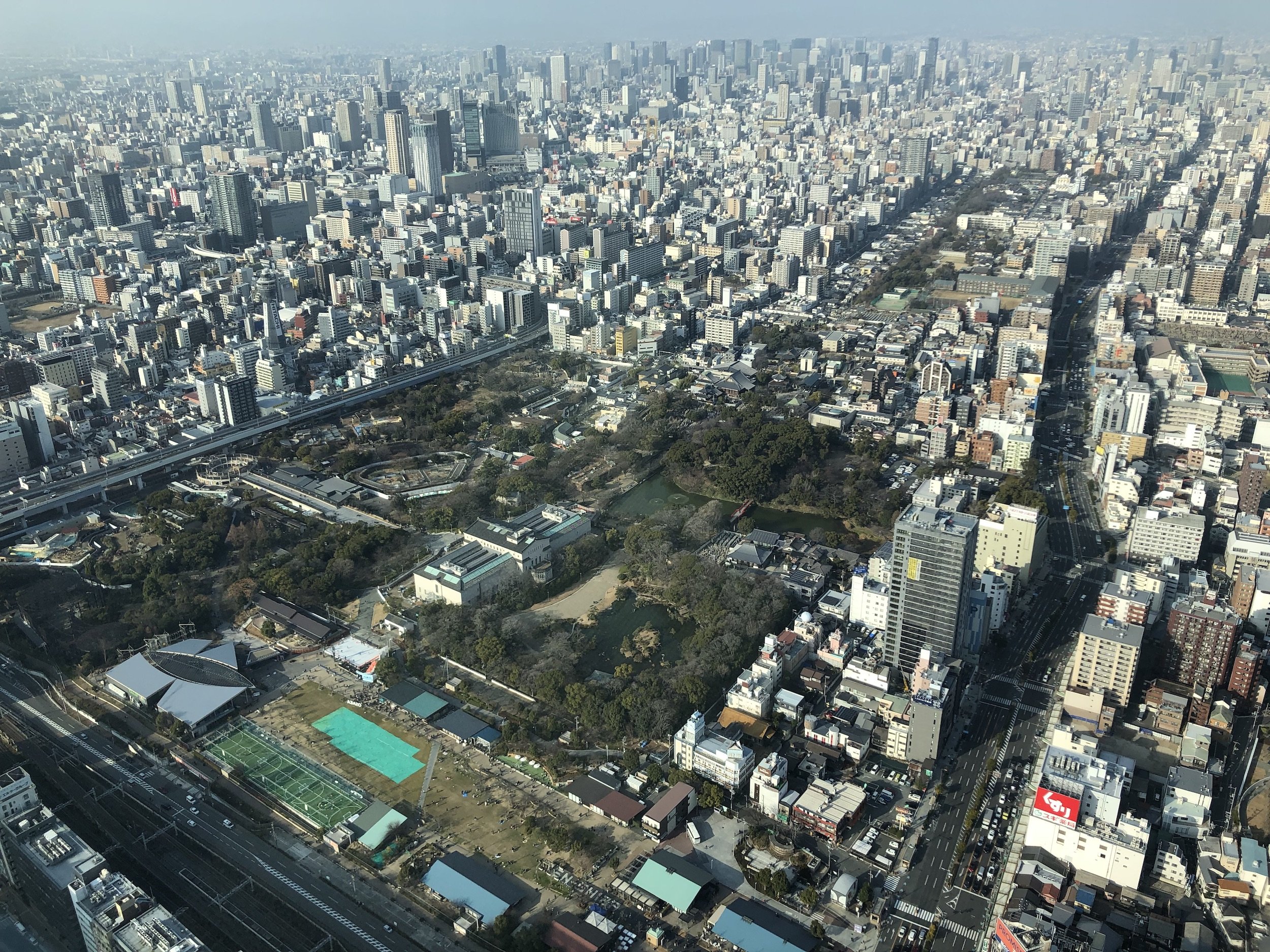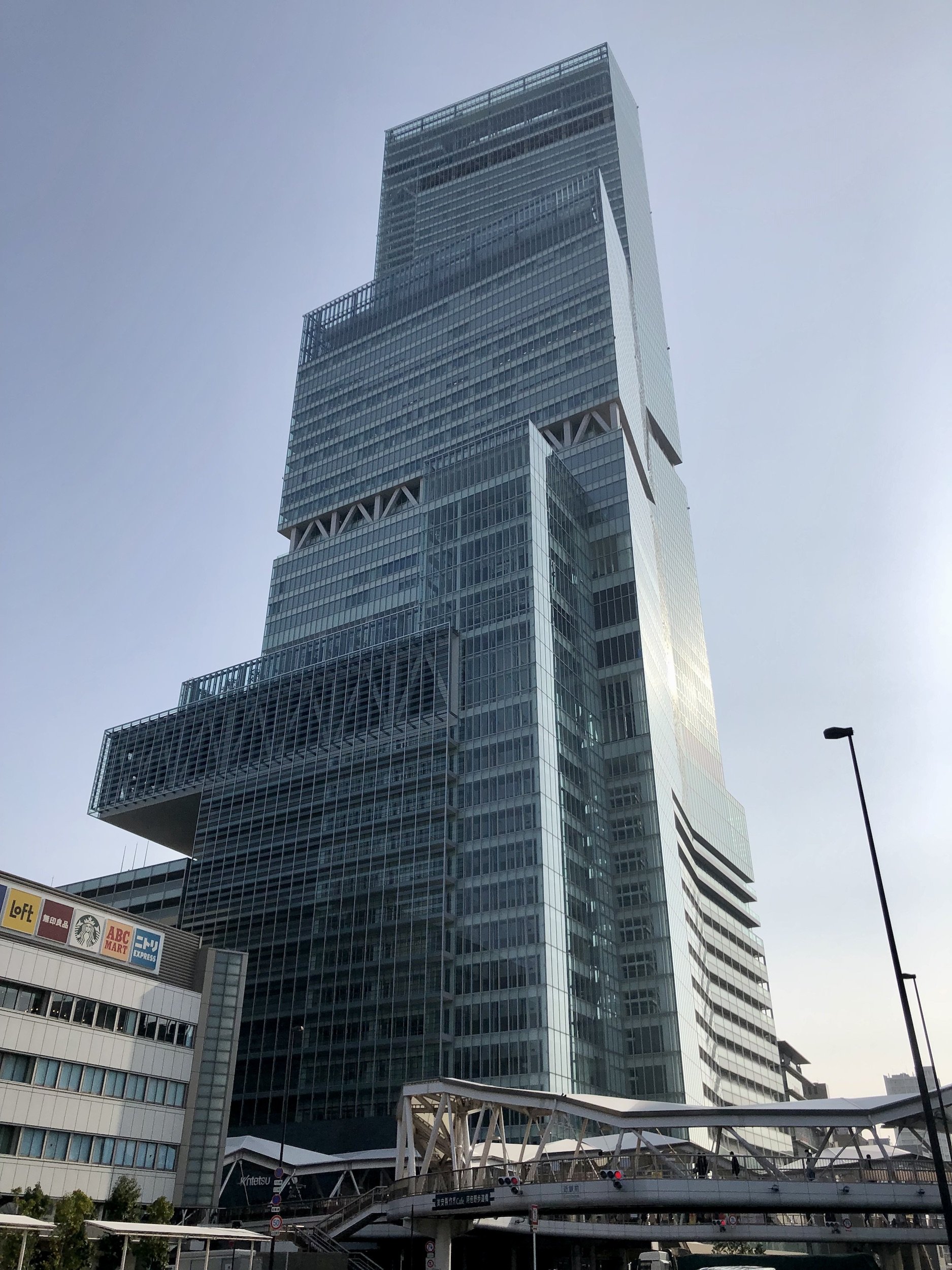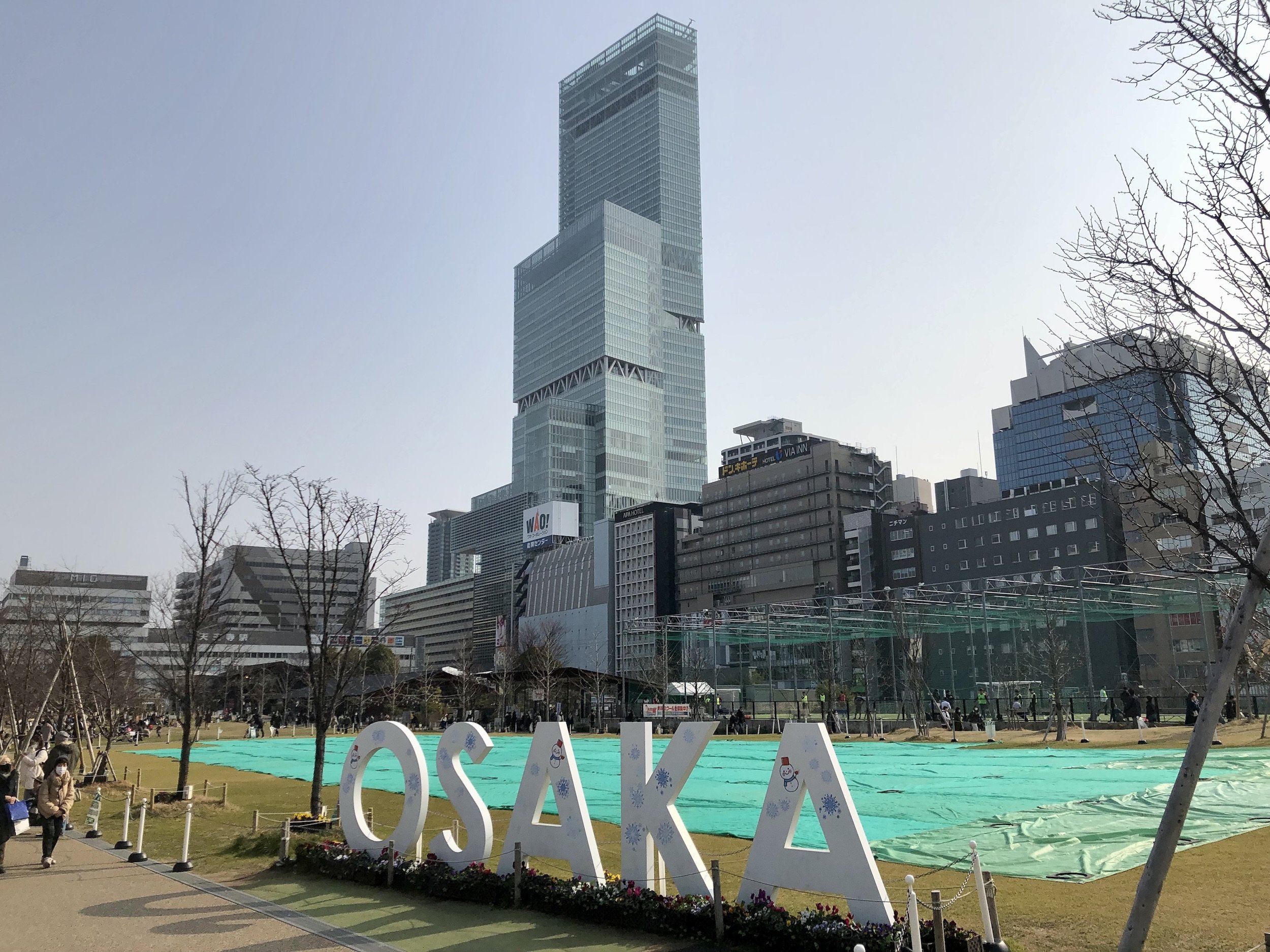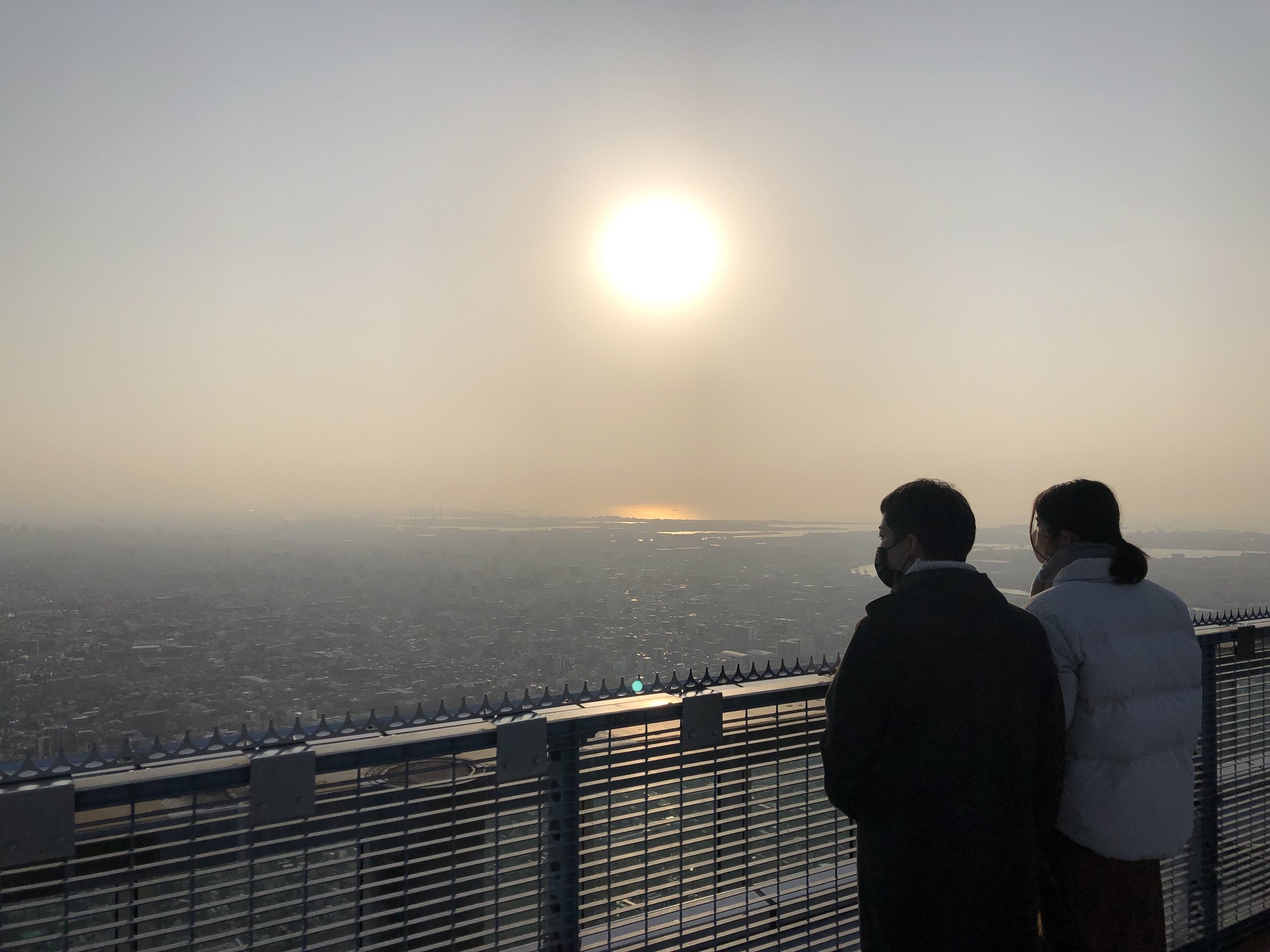Earlier this month, Japan’s new tallest building, Azabudai Hills Mori JP Tower, finished construction in Tokyo. We saw it on our recent bus tour from Tokyo Tower to the Rainbow Bridge. It’s part of the same new complex where the popular digital art museum, teamLab Borderless (formerly located on Odaiba), will be moving. The country’s tallest structure is still Tokyo Skytree, but topping out at 325.5 meters (over 1,000 feet), Azabudai Hills Mori JP Tower and its long, clunky name have now surpassed Osaka’s Abeno Harukas in height.
Abeno Harukas had been Japan’s tallest building since it opened in March 2014. It already looked mostly completed when I visited Osaka in the summer of 2013, and it still held the record when we visited its observatory in January of this year, almost a full decade later. The building had a good run, and it’s still there, of course, but visitors to the observatory will now have to content themselves with the knowledge that they’ve been to Japan’s second-tallest building (still the tallest one outside Tokyo).
Abeno Harukas to Tsutenkaku Tower
The regular Abeno Harukas observatory occupies the 58th through 60th floors of the building. As soon as you step off the elevator, the expansive view from the floor-to-ceiling windows hits you with that feeling of walking on air at a dizzying height.
Since Abeno Harukas is so high up relative to the surrounding buildings, it looks out over the whole urban sprawl of Osaka without any obstructions. In addition to landmarks like the oval-shaped Don Quijote Dotonbori Ferris wheel, you’ll see Tennoji Park and Tsutenkaku, the “Tower Reaching Heaven,” in Osaka’s Shinsekai district.
Tennoji Park holds a nice view of Abeno Harukas, and Tsutenkaku is located within walking distance on the other side of it. It can be interesting strolling through Shinsekai, dining on street food, and soaking up the pre-war atmosphere along with the sight of Billiken statues, dedicated to the god of “things as they ought to be.” However, in terms of the view it offers, even with an outdoor observation platform on the rooftop over its fifth floor (at 94.5 meters), Tsutenkaku can’t compare to Abeno Harukas.
Observatory Heliport Tour
One thing that differentiates Abeno Harukas even from Tokyo Skytree is that you can stand on its roof in the open air at the full 300 meters. The building has a heliport, and though it’s more restrictive than the one on Mori Tower in Roppongi Hills, there’s a short tour of the heliport that departs from the 60th floor every 50 minutes. Tickets for the observatory are ¥1,500 and the heliport tour runs an additional ¥500.
When you get up to the rooftop on Abeno Harukas, you’ll be able to take pictures, but only from within the yellow line around the helicopter pad. You can still step past that line, up to the fence, but as a safety precaution, using cameras in that area isn’t allowed. Before you hit the stairs, they’ll also make you secure your hat and other loose items or stow them in a locker, so they don’t become falling objects from 300 meters up.
Honestly, the view from the Abeno Harukas heliport isn’t quite as impressive or in-your-face as the regular observatory (or even the Mori Tower heliport, which has Tokyo Tower nearby to anchor its view), but if you catch it right at sunset, it could be beautiful. And with the Skytree’s observatory being all windows, the Abeno Harukas heliport currently ranks as Japan’s highest open-air observation deck, so that ought to count for something. It can be accessed from Tennoji Station on the Osaka Loop Line.



















